
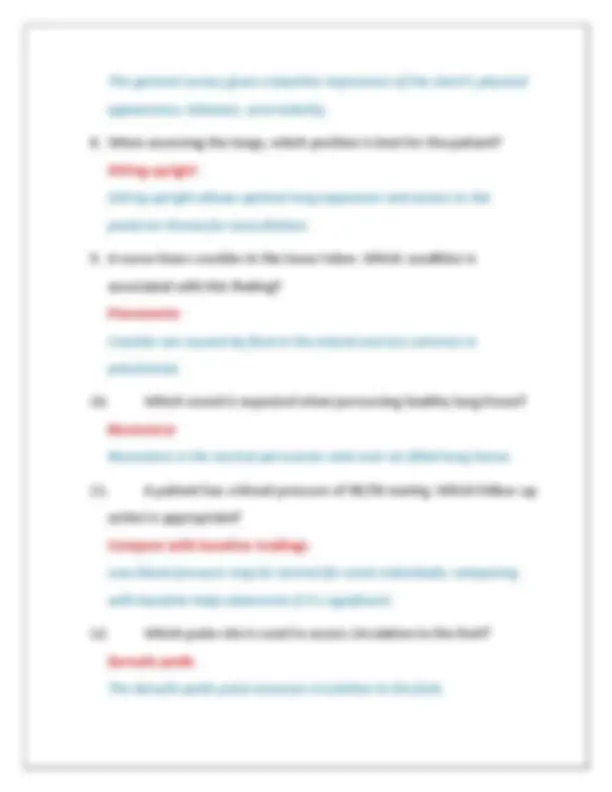
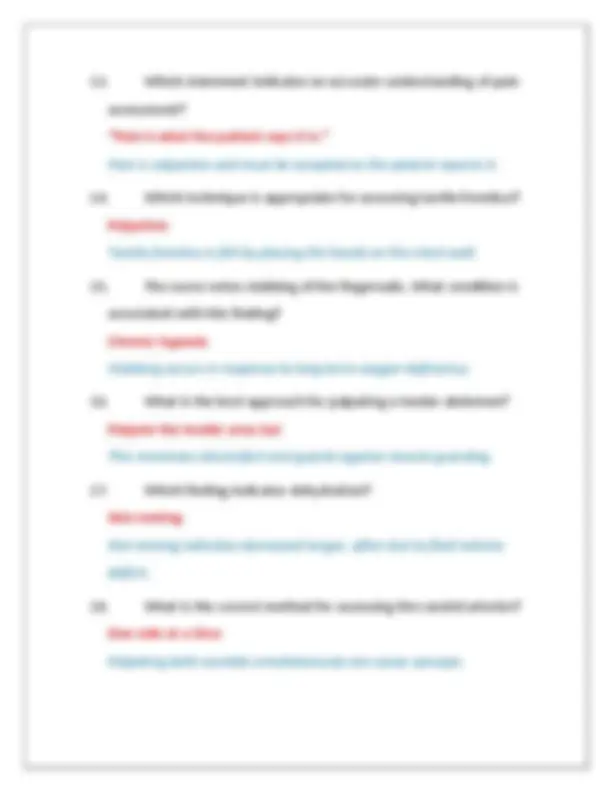
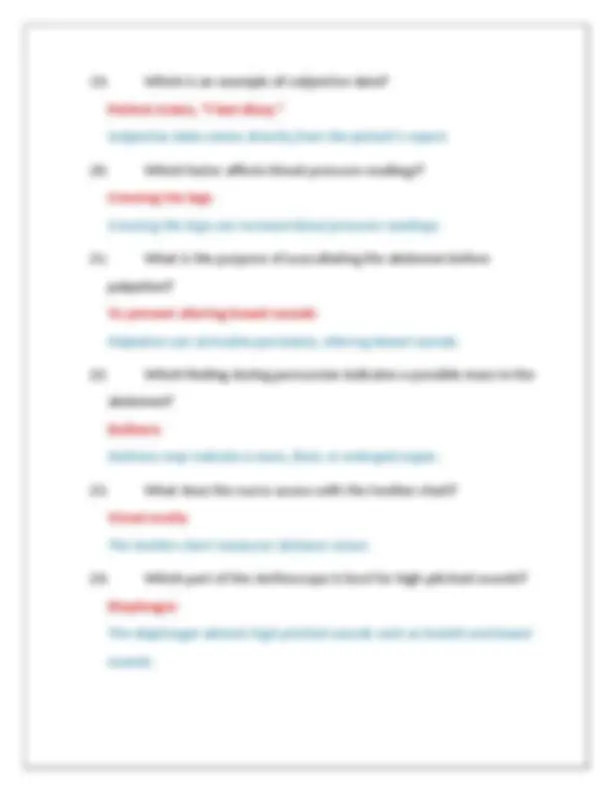
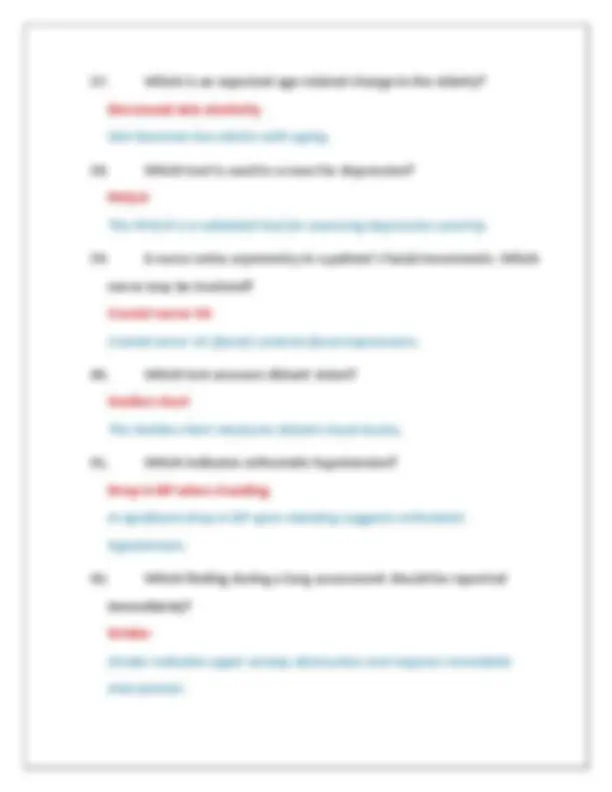
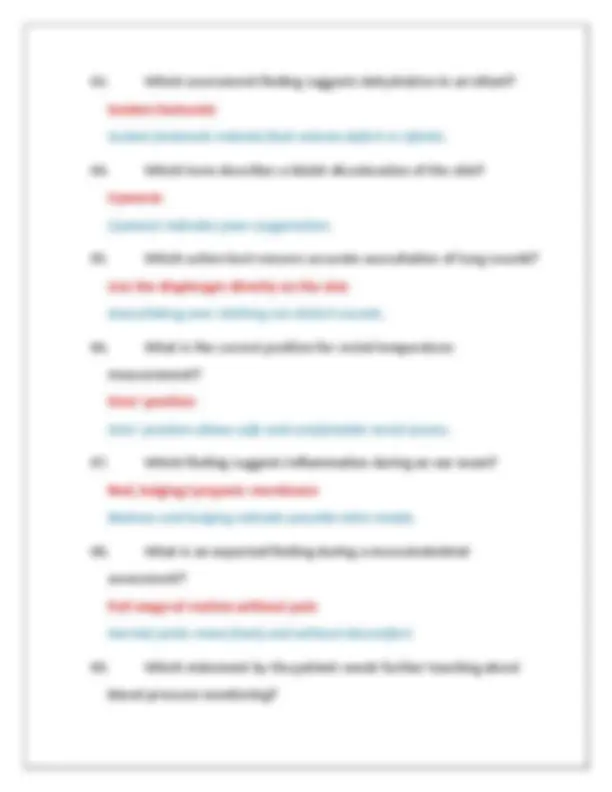
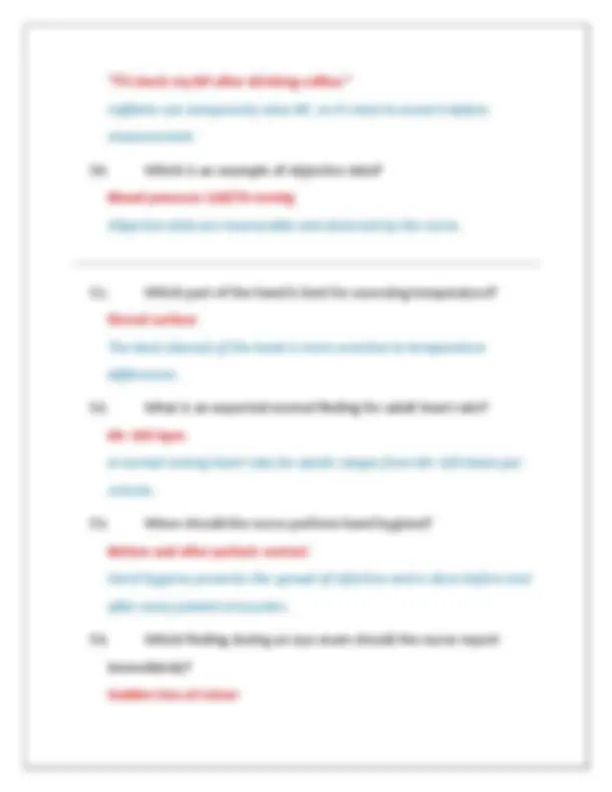
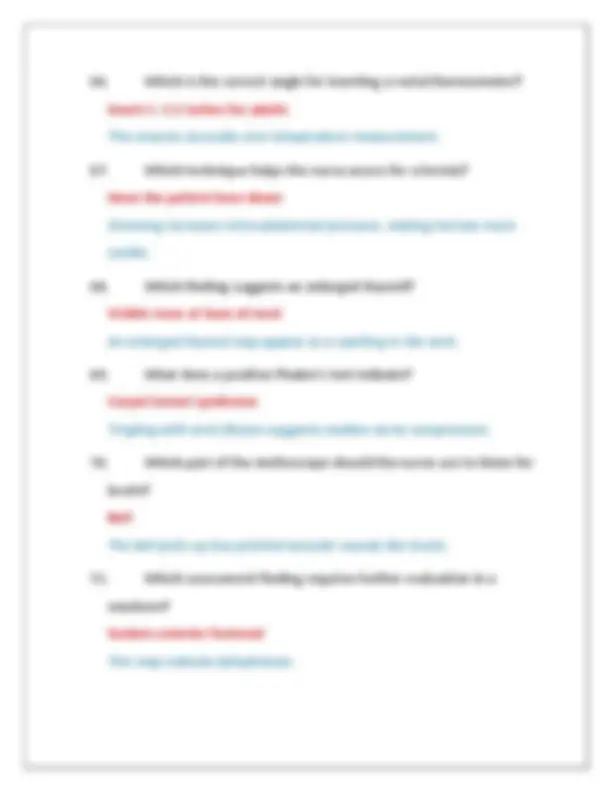
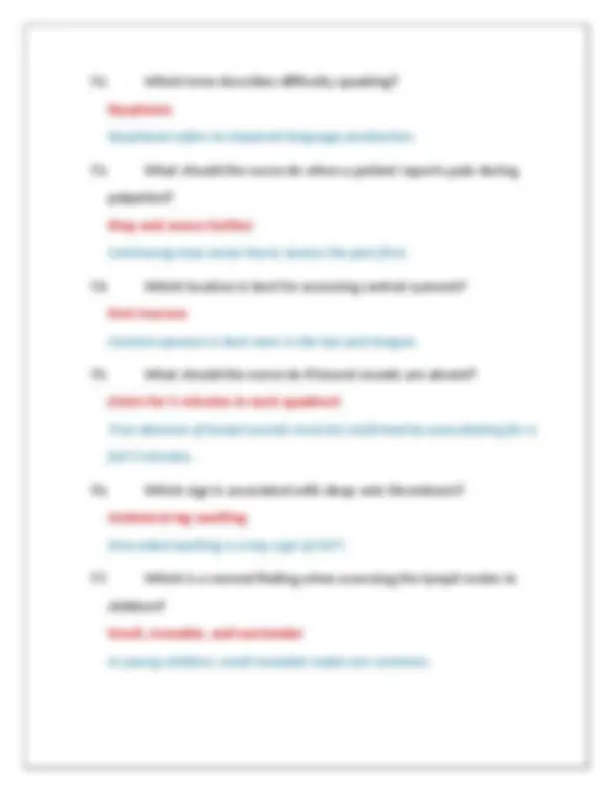
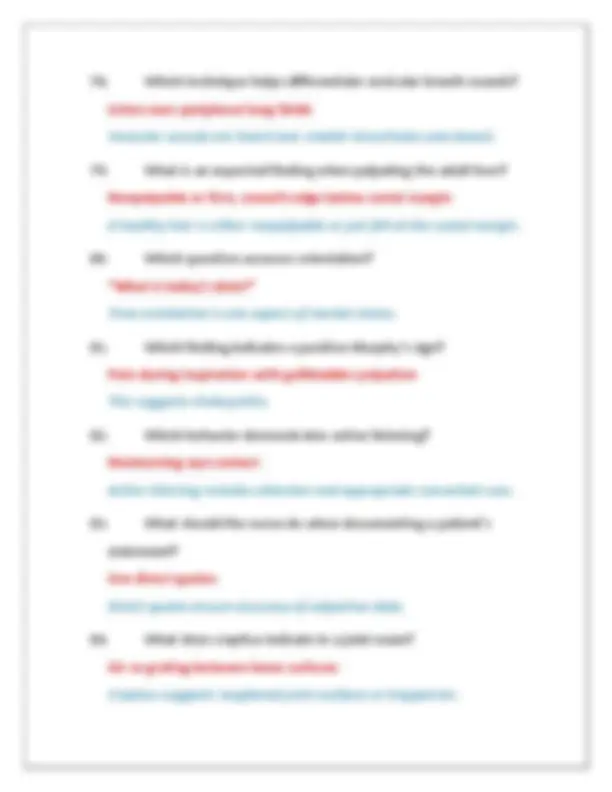
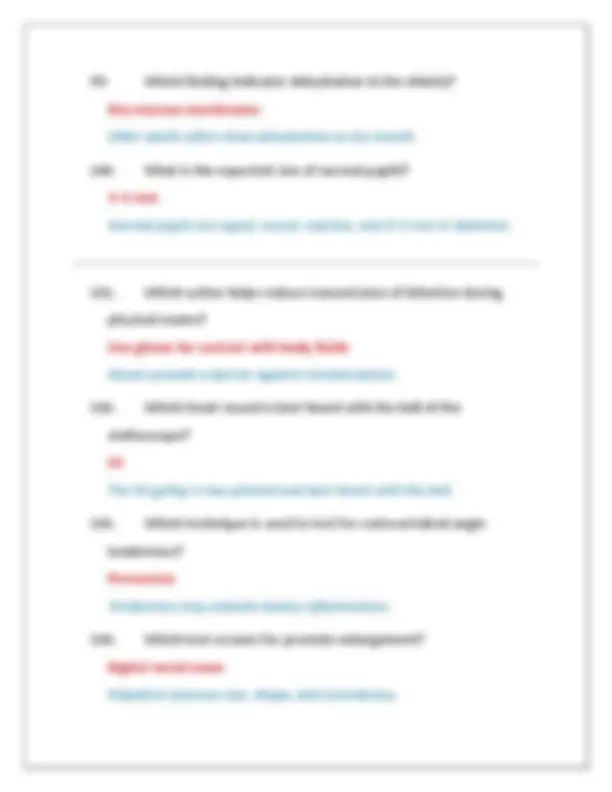
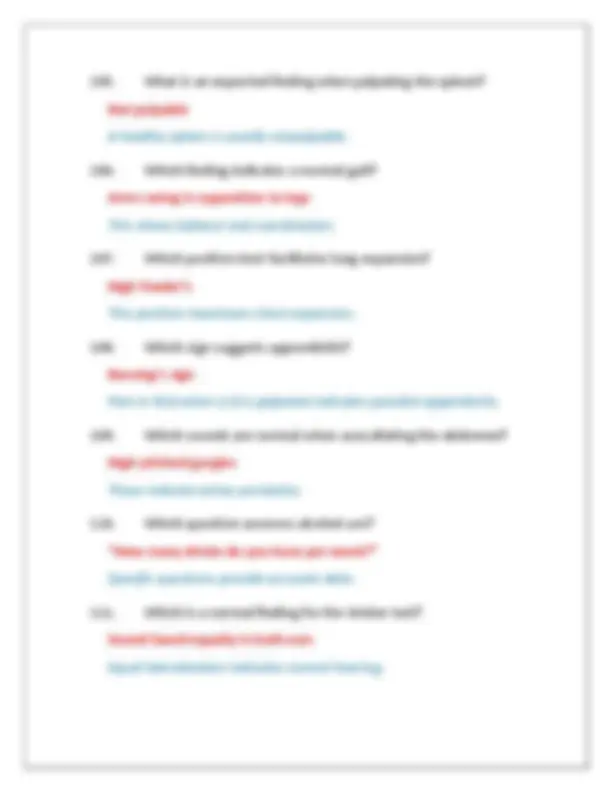
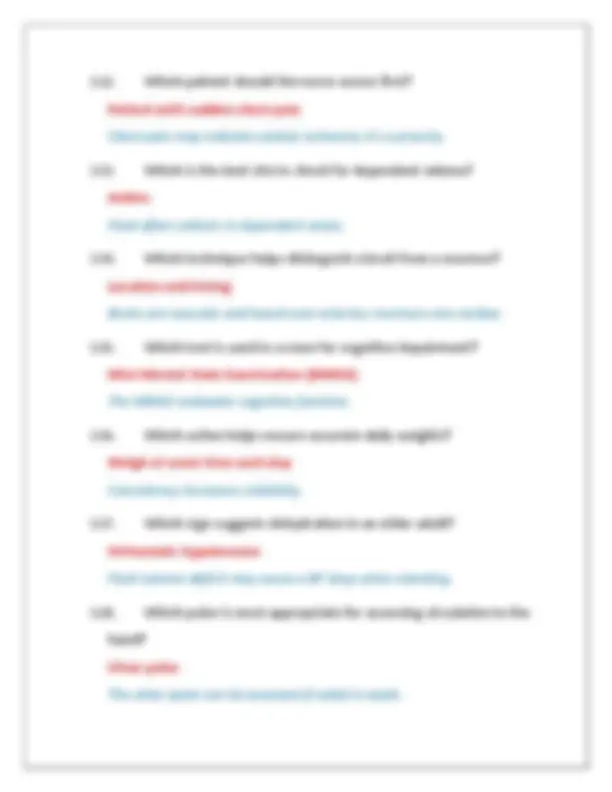
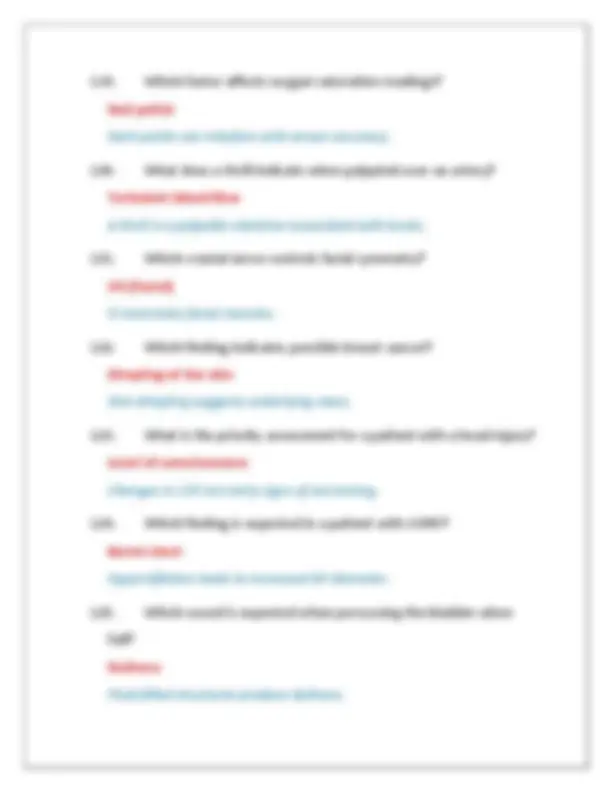
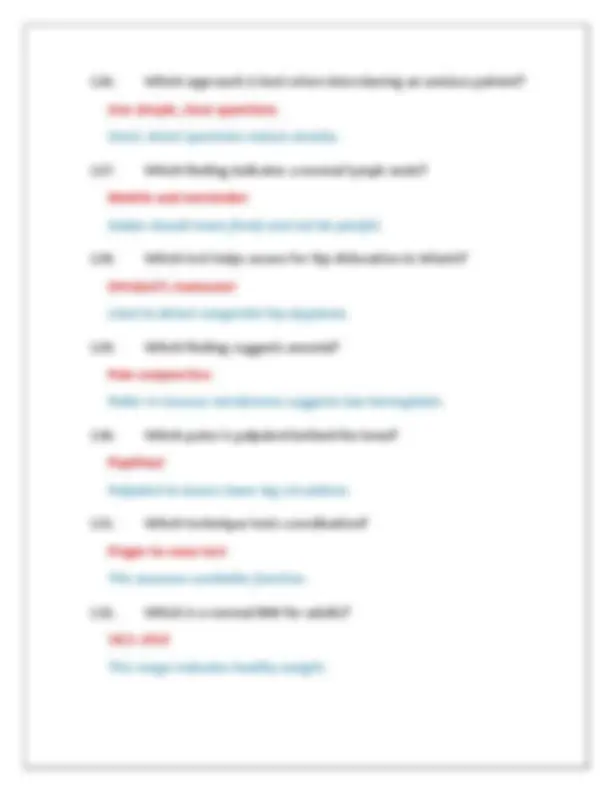
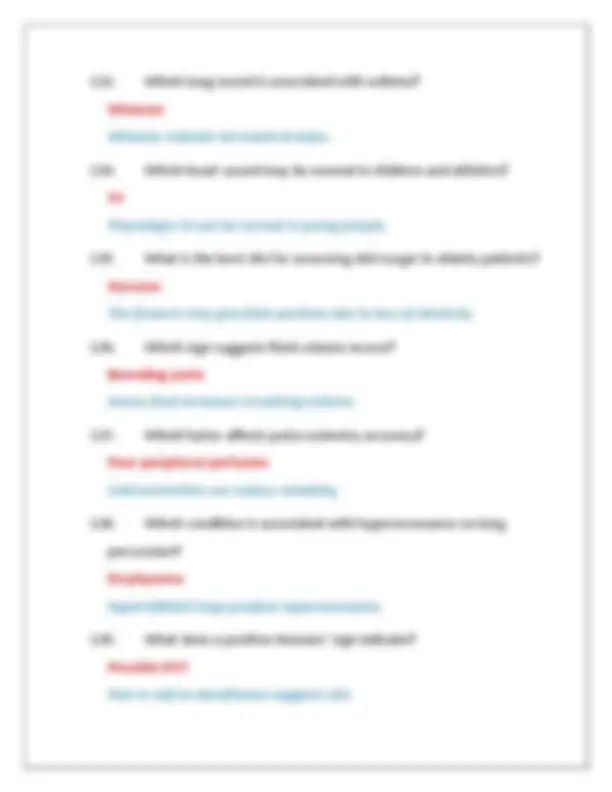
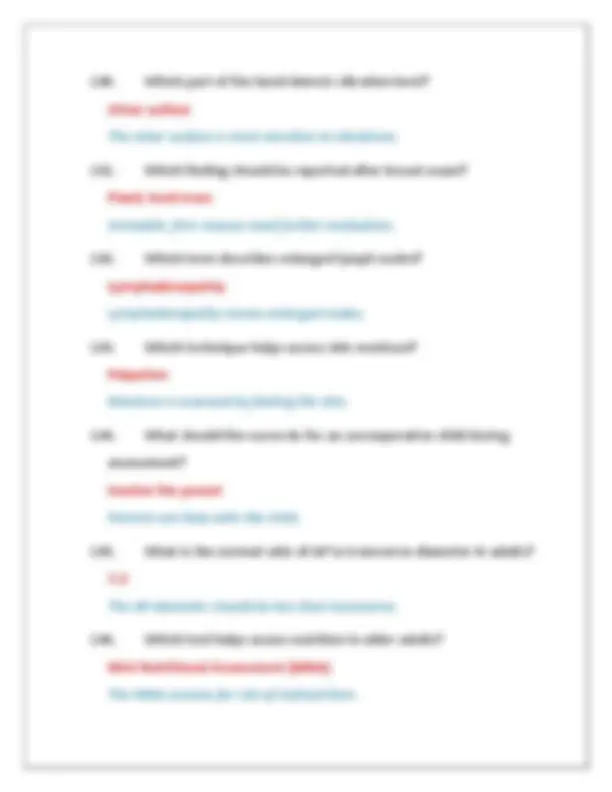
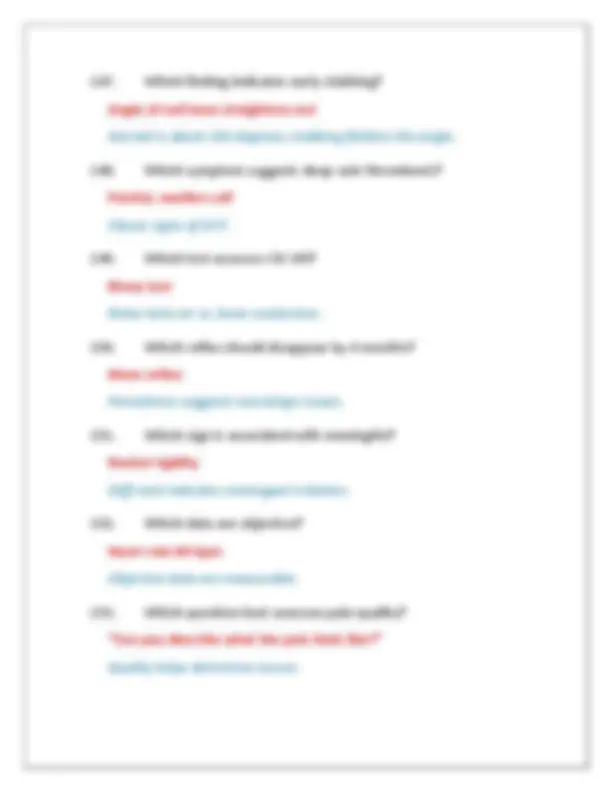
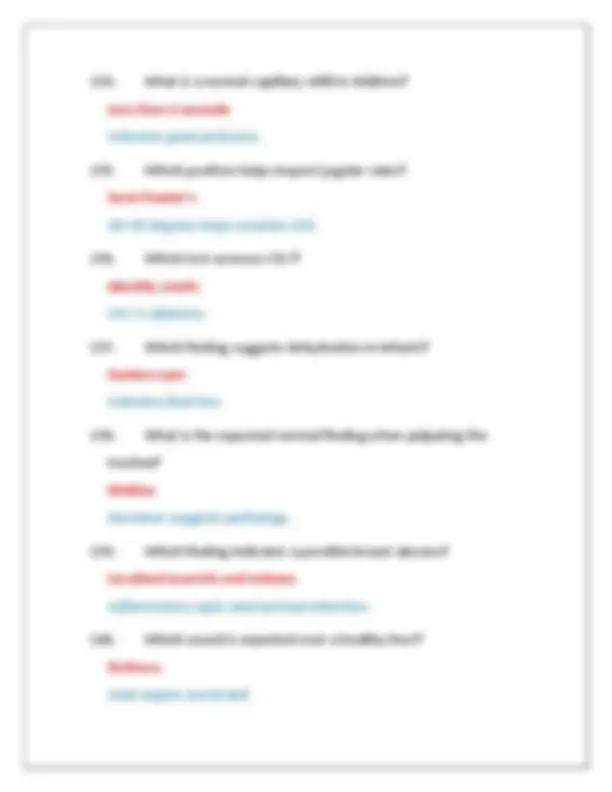
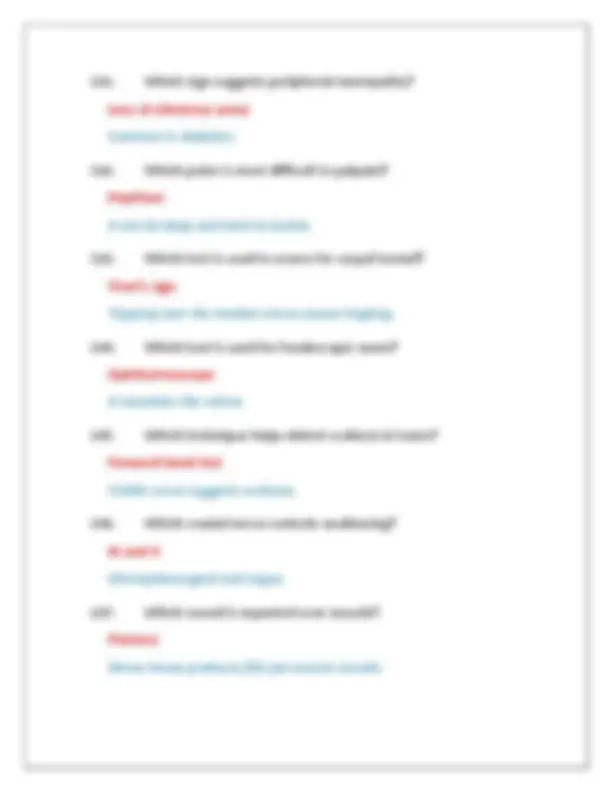
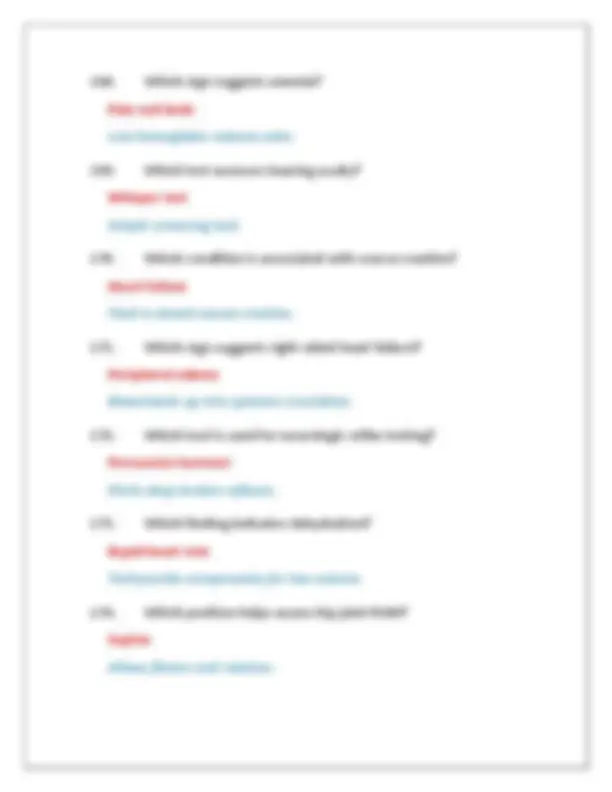
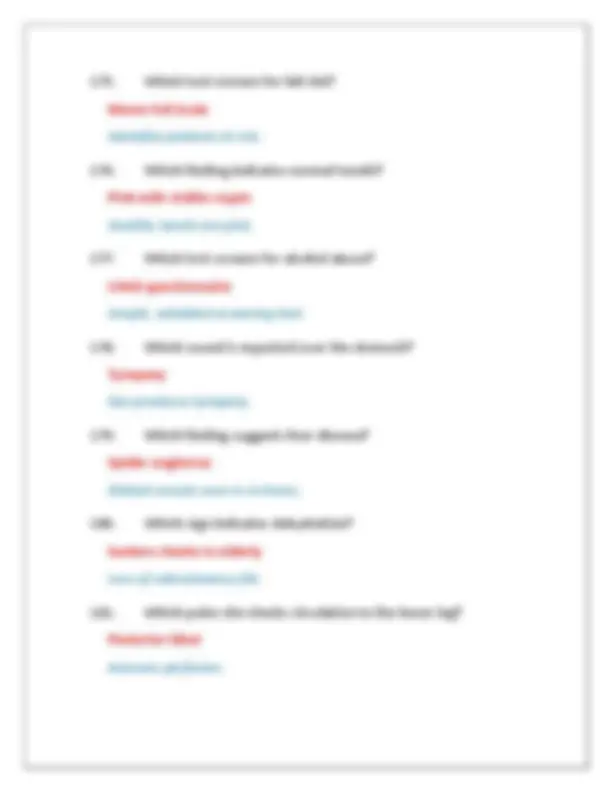
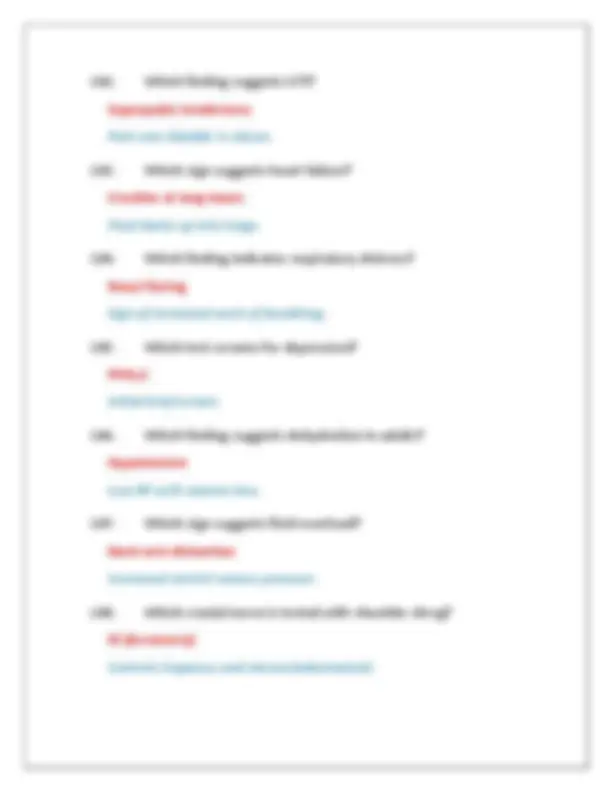
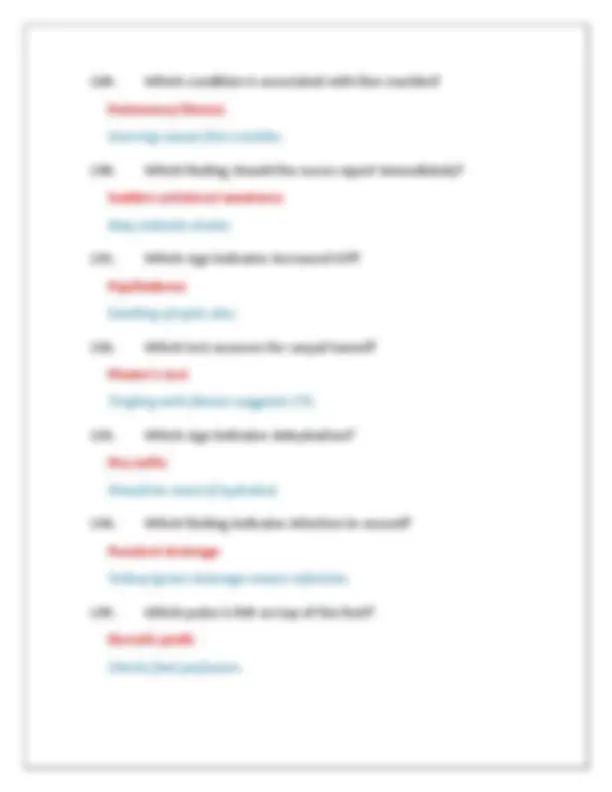
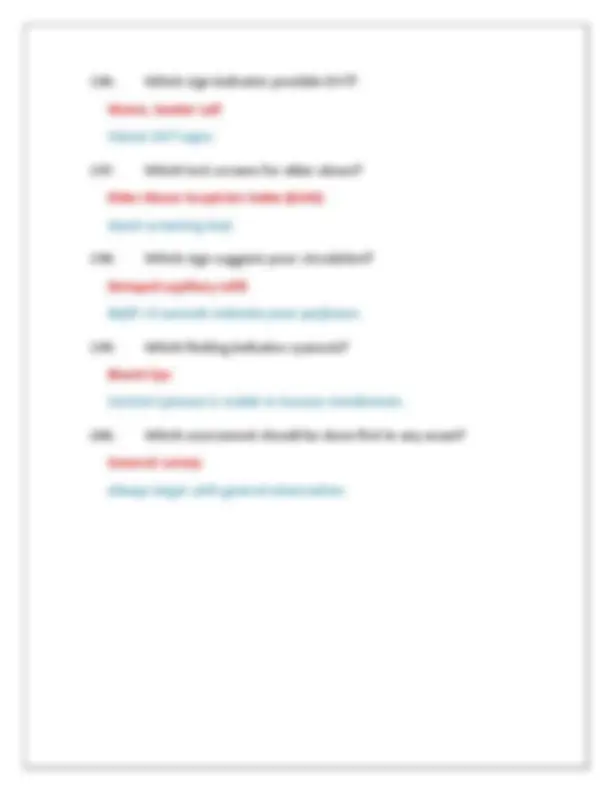


Study with the several resources on Docsity

Earn points by helping other students or get them with a premium plan


Prepare for your exams
Study with the several resources on Docsity

Earn points to download
Earn points by helping other students or get them with a premium plan
Community
Ask the community for help and clear up your study doubts
Discover the best universities in your country according to Docsity users
Free resources
Download our free guides on studying techniques, anxiety management strategies, and thesis advice from Docsity tutors
NSG 1600 HEALTH ASSESSMENT MIDTERM EXAM 2 QUESTIONS AND CORRECT ANSWERS (VERIFIED ANSWERS) PLUS RATIONALES 2025 GALEN COLLEGE OF NURSING
Typology: Exams
1 / 32

This page cannot be seen from the preview
Don't miss anything!

























“I’ll check my BP after drinking coffee.” Caffeine can temporarily raise BP, so it’s best to avoid it before measurement.
Sudden vision loss may indicate retinal detachment or stroke and requires immediate intervention.